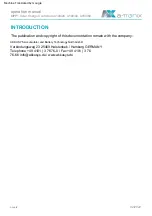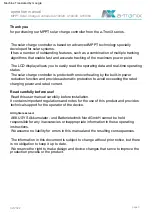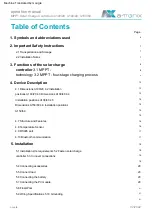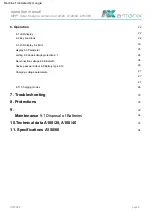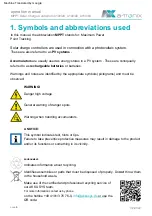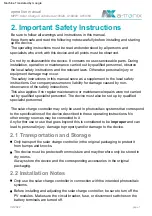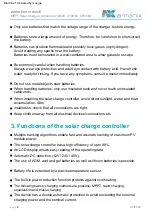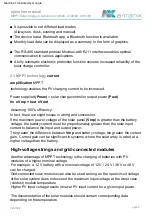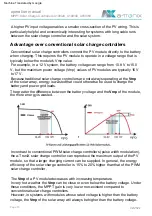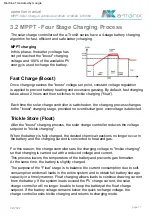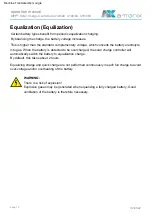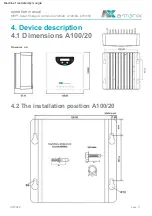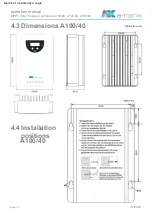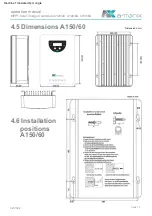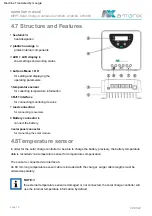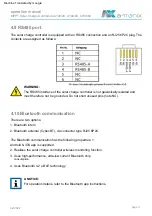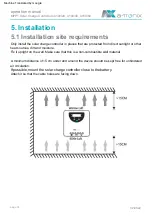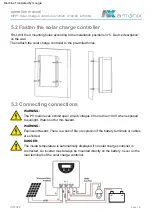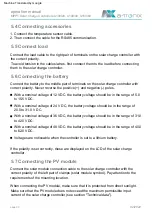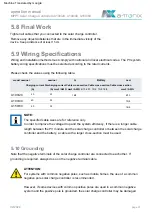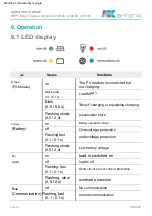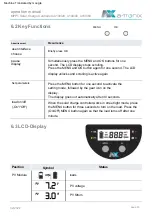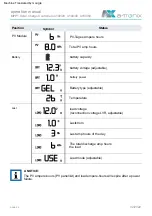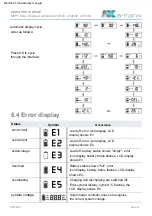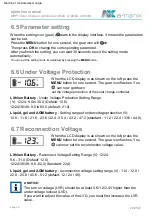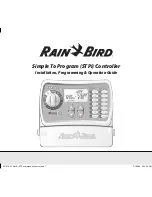
3.2 MPPT - Four Stage Charging Process
operation manual
Trickle Store (Float)
Fast Charge (Boost)
page 11
02/2022
When the battery is fully charged, the desired chemical reactions no longer occur in
the battery and the charging current is converted to heat and gas.
After the "boost" charging process, the solar charge controller reduces the voltage
setpoint to "trickle charging".
Once charging reaches the “boost” voltage set point, constant voltage regulation
is applied to prevent battery heating and excessive gassing. By default, fast charging
takes about 2 hours and then switches to trickle charging (“float”).
The purpose of the “Float” stage is to balance the current consumption due to self-
consumption and small loads in the entire system and to obtain full battery storage
capacity in a timely manner. Float charging allows loads to continue drawing current
from the battery. If the system loads exceed the PV charge current, the solar
charge controller will no longer be able to keep the battery at the float charge
setpoint. If the battery voltage remains below the quick recharge voltage, the
charge controller exits trickle charging and returns to charging mode.
For this reason, the charge controller sets the charging voltage to "trickle charging"
so that charging is carried out with a reduced voltage and current.
Each time the solar charge controller is switched on, the charging process changes
to the "boost" charging stage, provided no overdischarge or overvoltage is detected.
The solar charge controllers of the a-TroniX series have a 4-stage battery charging
algorithm for fast, efficient and safe battery charging.
This process lowers the temperature of the battery and prevents gas formation.
MPPT charging
In this phase, the battery voltage has
not yet reached the "boost" charging
voltage and 100% of the available PV
energy is used to charge the battery.
At the same time, the battery is slightly charged.
MPPT Solar Charge Controllers A100/20, A100/40, A150/60
Machine Translated by Google


